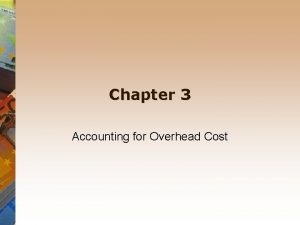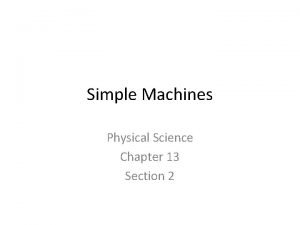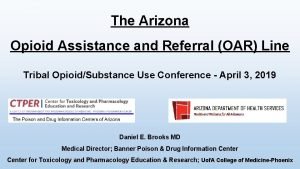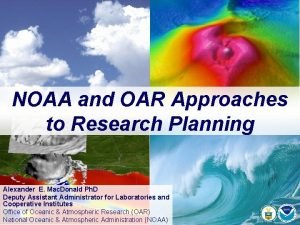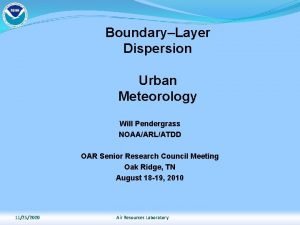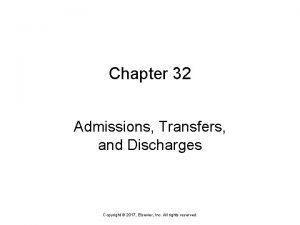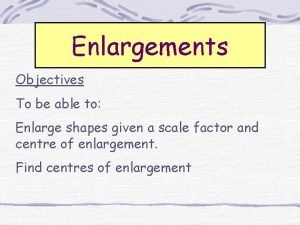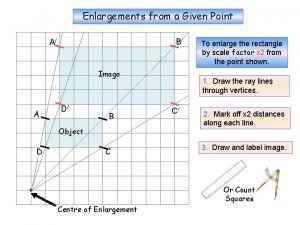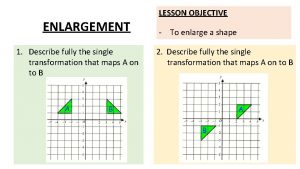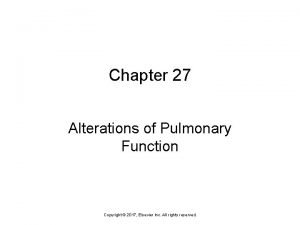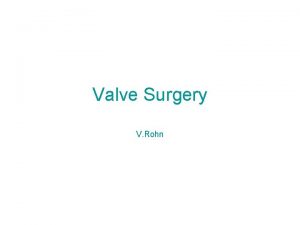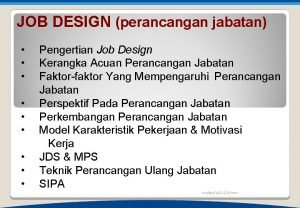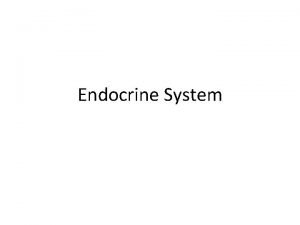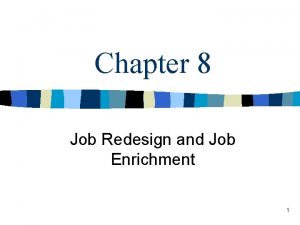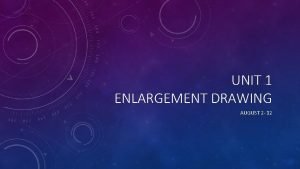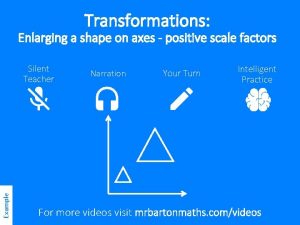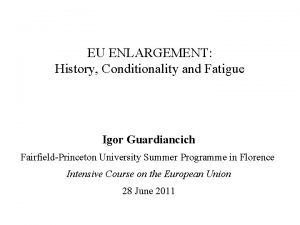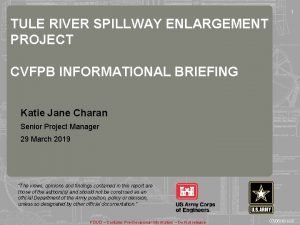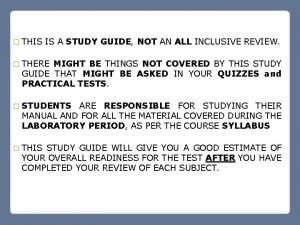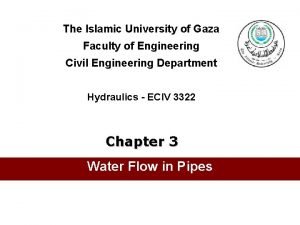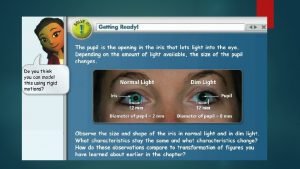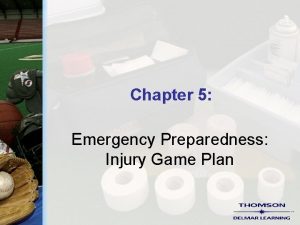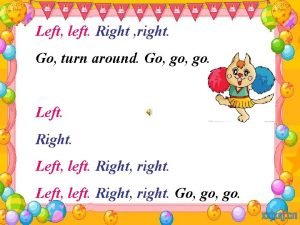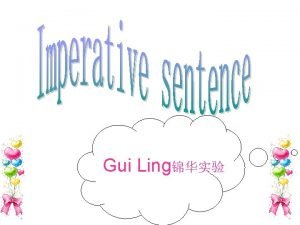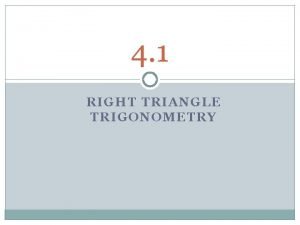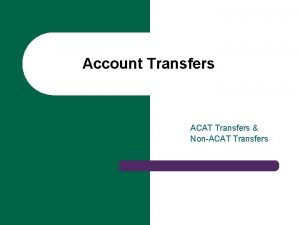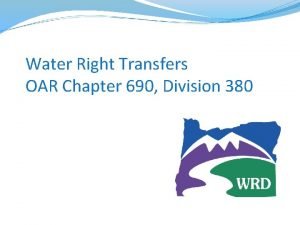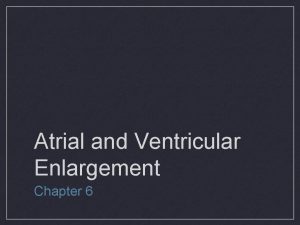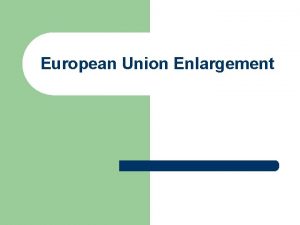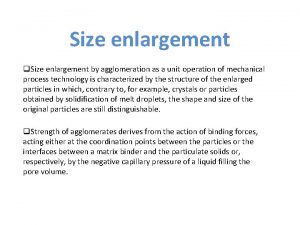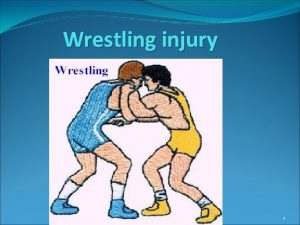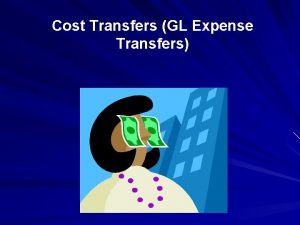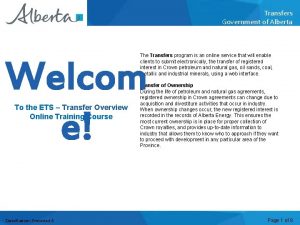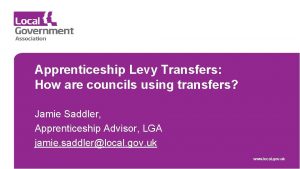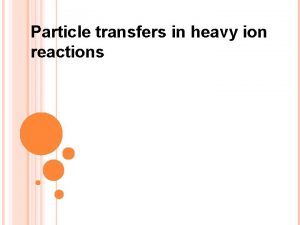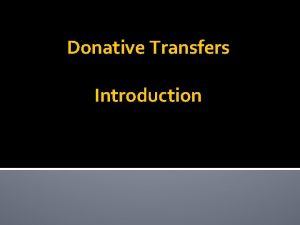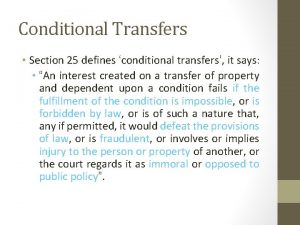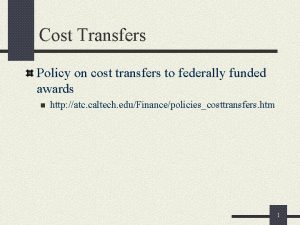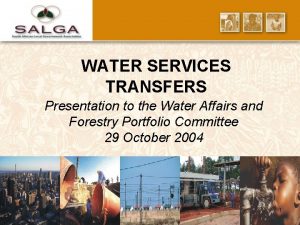Water Right Transfers Enlargement Injury Review OAR Chapter

![Transfer & Conservation Section (TACS) �Transfers [Div. 380] �Permit Amendments [ORS 537. 211(4)] – Transfer & Conservation Section (TACS) �Transfers [Div. 380] �Permit Amendments [ORS 537. 211(4)] –](https://slidetodoc.com/presentation_image/776d64846c56e5154cd26a6665ea08a3/image-2.jpg)
















































- Slides: 50

Water Right Transfers - Enlargement & Injury Review – (OAR Chapter 690, Division 380) Lisa Jaramillo Transfer and Conservation Section Manager Kelly Starnes Transfer Program Coordinator
![Transfer Conservation Section TACS Transfers Div 380 Permit Amendments ORS 537 2114 Transfer & Conservation Section (TACS) �Transfers [Div. 380] �Permit Amendments [ORS 537. 211(4)] –](https://slidetodoc.com/presentation_image/776d64846c56e5154cd26a6665ea08a3/image-2.jpg)
Transfer & Conservation Section (TACS) �Transfers [Div. 380] �Permit Amendments [ORS 537. 211(4)] – Cannot change Use �Ground Water Registration Modifications [Div. 382] �Instream Transfers & Instream Leases [Div. 77] �District Transfers [Div. 385] �Allocations of Conservation Water [Div. 18] �Water Management & Conservation Plans [Div. 86] �Reclaimed Municipal Water Use [ORS 537. 132]

The TACS Team

Transfers �Transfer Program Coordinator – Kelly Starnes �Transfer Caseworkers �Joan Smith (Salem) �Sarah Henderson (Salem) �Arla Heard (Salem) �Vacant Position (Salem) �Ken Dowden (Pendleton) �Marcy Osborn (Baker City)

Types of Transfers �Permanent Water Right Transfer �Permit Amendment �Ground Water Registration Modification �Instream Transfer �Temporary Water Right Transfer �Temporary Drought Transfer

Types of Permanent Transfers �Place of Use (POU) �Point of Diversion/Appropriation (POD/POA) or Additional POD/POA �Change in POD or POA to reflect Historical Use �Character of Use �Surface Water POD to a Ground Water POA �Supplemental Use to Primary Use �Substitution of Supplemental GW for Primary SW �Exchange of Water

Types of Temporary Transfers Temporary Transfer (1 to 5 years): �Place of Use �(…and, if necessary to convey water to temporary POU, may temporarily change POD or POA) Temporary Drought Transfer (Div. 19) (1 year or for the term of Governor-declared drought, whichever is shorter): �Type of Use �Place of Use �Point of Diversion

Criteria for Approval �Water use subject to transfer �Right beneficially used within past 5 years according to terms & conditions of permit and not subject to forfeiture �Ready, willing & able to use full amount allowed �No enlargement �No injury �Same Source

What is Enlargement? �“Enlargement” means an expansion of a water right and includes, but is not limited to: a) Using a greater rate or duty of water per acre than currently allowed under a right; b) Increasing the acreage irrigated under a right; c) Failing to keep the original POU from receiving water from the same source; or d) Diverting more water at the new POD or POA than is legally available to that right at the original POD or POA.

What is Injury? �“Injury” or “Injury to an existing water right” means… … a proposed transfer would result in another, existing water right not receiving previously available water to which it is legally entitled.

Watermaster Review Form: Water Right Transfer �Transfer Caseworker evaluates application for injury and enlargement potential �Information provided by Watermaster in review form helps inform the caseworker’s evaluation �Field Operations Guidance Manual � 11. 03 Watermaster Review Form Instructions

Watermaster Review Form: Water Right Transfer �Things to consider: �Forfeiture issues associated with the right �History of regulation on the source �Return flows benefiting downstream water rights �Effect of transfer to upstream water rights �Channel losses

Watermaster Review Form: Water Right Transfer �More things to consider: �Forfeiture issues associated with the right �Increased regulation activity (i. e. , a new call) would occur as a result of transfer �POU – can “FROM” lands be dried up? �USE – can it be used beneficially without waste? �Are there alternatives to resolve identified issues?

Recap of Enlargement �“Enlargement” means an expansion of a water right and includes, but is not limited to: �Greater rate or duty of water per acre �Increasing acreage irrigated under a right �Failing to keep the original place of use from receiving water from the same source �Diverting more water at new POD/POA than is legally available at original POD/POA

Enlargement - Case Study #1 �POU change to increase irrigated acreage

Enlargement - Case Study #1 �POU change to increase irrigated acreage �Answer: Enlargement

Enlargement - Case Study #2 �POU change to expand service area of a municipal water supplier

Enlargement - Case Study #2 �POU change to expand service area of a municipal water supplier �Answer: No Enlargement

Enlargement - Case Study #3 �POD & POU changes to add industrial facilities

Enlargement - Case Study #3 �POD & POU changes to add industrial facilities �Answer: No Enlargement

Other Enlargement Issues �Potential for use of more water than could be used under existing right �Expansion of season (i. e. , outside original authorized season) �Multiple changes in USE �Can’t prevent “From” lands from receiving water from the same source �Water from a different source – not enlargement �Change from specific to general use �Domestic to Quasi-Municipal �Irrigation to Wildlife Purposes

Recap of Injury �“Injury” or “Injury to an existing water right” means… … a proposed transfer would result in another, existing water right not receiving previously available water to which it is legally entitled.

Maximization of Use �Based on how water right could be used �Under existing authorization �Efficiently and intensively �Maximum beneficial use, given most water-intensive crop typically grown (or could be grown) in the region �Injury (and potential enlargement) if: �Impacts greater than could occur with maximization � Not necessarily injury if maximum beneficial use is greater than what’s been applied in the past

Scenarios with Injury Issues �Depictions of several scenarios for WR changes �Dotted lines/cross-hachured lands are “FROM” �Solid lines/solid lands are “TO” �Priority dates in letter order �A is most senior �B is next junior, etc. �Injury or disadvantage? �Legal entitlement to the water, or �Past beneficiary of water for which user had no legal call

Injury - Case Study #1 �Upstream movement of Point of Diversion Dotted line = “FROM” Solid line = “TO”

Injury - Case Study #1 �Upstream movement of Point of Diversion �Answer: “B” likely injured because of increased call on source stream

Injury - Case Study #2 �Downstream movement of Point of Diversion Dotted line = “FROM” Solid line = “TO”

Injury - Case Study #2 �Downstream movement of Point of Diversion �Answer: No injury, but call will be to old POD, “C” cannot be subject to regulation for “A”

Injury - Case Study #3 �Downstream movement of POD into a losing reach Dotted line = “FROM” Solid line = “TO”

Injury - Case Study #3 �Downstream movement of POD into a losing reach �Answer: “B” likely injured unless call limited to quantity available at old POD

Injury - Case Study #4 �Upstream movement of POD in instream water right reach Dotted line = “FROM” Solid line = “TO” Pink line = instream water right

Injury - Case Study #4 �Upstream movement of POD in instream water right reach �Answer: Instream water right “D” not injured if flows met virtually all the time

Injury - Case Study #5 �POA change into significantly greater hydraulic connection Pink dot = “FROM” POA Green dot = “TO” POA

Injury - Case Study #5 �POA change into significantly greater hydraulic connection �Answer: “B” likely injured because of increased impact on surface water

Potentially Injurious POD Changes (Summary of Injury Case Studies #3, #4, and #5) �To a point downstream of a losing reach, unless conditioned �To a point upstream of a junior, including any portion of an instream water right reach �…if it results in a new call for regulation �To a well in significantly closer hydraulic connection with surface water

Injury - Case Study #6 �POU change to location downstream of junior Cross-hachured land = “FROM” Solid land = “TO”

Injury - Case Study #6 �POU change to location downstream of junior �Answer: “B” potentially injured if relies on return flows

Injury - Case Study #7 �POU change to source watershed Cross-hachured land = “FROM” Solid land = “TO”

Injury - Case Study #7 �POU change to source watershed �Answer: “D” not injured because return flows are from a different source

Injury - Case Study #8 �POU change to another watershed Cross-hachured land = “FROM” Solid land = “TO”

Injury - Case Study #8 �POU change to another watershed �Answer: “B” potentially injured if relies on return flows

Injury - Case Study #9 �POU change to another watershed for use of stored water Cross-hachured land = “FROM” Solid land = “TO”

Injury - Case Study #9 �POU change to another watershed for use of stored water �Answer: “D” not injured because return flows are from a different source (i. e. , stored water)

Potentially Injurious Place of Use Changes (Summary of Injury Case Studies #6 - #9) �Any change that results in a reduction in water to other rights calling on same source because of modification of return flows

Injury - Case Study #10 �USE change from irrigation to industrial Dotted line to field = “FROM” Solid line to factory = “TO”

Injury - Case Study #10 �USE change from irrigation to industrial �Answer: “B” & “C” potentially injured if rely on return flows

Injury - Case Study #11 �USE change from irrigation to nursery • Irrigation season: March 1 to October 31 • Water not available: November to February Solid green land = “FROM” and “TO” occurring on the same land

Injury - Case Study #11 �USE change from irrigation to nursery �Answer: “B” and “D” potentially injured due to “A” diverting water for nursery use during periods when water is not available.

Potentially Injurious Character of Use Changes (Summary of Injury Case Studies #10 and #11) �Any change that results in a reduction in water to other rights calling on same source because of modification of return flows �Any change that results in expansion of the season of use of a live flow surface water right into time period(s) when water is not available

Questions? Lisa Jaramillo Transfer and Conservation Section Manager Phone: 503 -986 -0880 E-Mail: Lisa. J. Jaramillo@wrd. state. or. us Kelly Starnes Transfer Program Coordinator Phone: 503 -986 -0886 E-Mail: Patrick. K. Starnes@wrd. state. or. us
 Right product right place right time right price
Right product right place right time right price Family time
Family time Intentional injury and unintentional injury
Intentional injury and unintentional injury Water and water and water water
Water and water and water water Rumus sokolow lyon
Rumus sokolow lyon Right atrial enlargement ecg
Right atrial enlargement ecg The right man on the right place at the right time
The right man on the right place at the right time Opensim oar files
Opensim oar files Calculating predetermined overhead rate
Calculating predetermined overhead rate Tara and tiree, fearless friends
Tara and tiree, fearless friends What kind of simple machine is a boat oar
What kind of simple machine is a boat oar Oar staffing phoenix az
Oar staffing phoenix az Oar
Oar Simple machines
Simple machines Oar strategic plan
Oar strategic plan Urban oar
Urban oar Chapter 32 admissions transfers and discharges
Chapter 32 admissions transfers and discharges Positioning transfers and ambulation
Positioning transfers and ambulation Chapter review motion part a vocabulary review answer key
Chapter review motion part a vocabulary review answer key Enlargement of a lymphoid organ in the luq
Enlargement of a lymphoid organ in the luq Lumbar enlargement
Lumbar enlargement Job analysis vs job evaluation
Job analysis vs job evaluation How to find centre of enlargement without drawing
How to find centre of enlargement without drawing Enlarge
Enlarge Single transformation meaning
Single transformation meaning Absorption atelectasis
Absorption atelectasis Nicks procedure
Nicks procedure Job design contoh
Job design contoh Normal thyroid levels
Normal thyroid levels Job redesign job enrichment and job enlargement
Job redesign job enrichment and job enlargement Enlargement drawing
Enlargement drawing How to enlarge a shape by scale factor 2
How to enlarge a shape by scale factor 2 Eu enlargement timeline
Eu enlargement timeline Tule river spillway enlargement project
Tule river spillway enlargement project Anterior gray horn
Anterior gray horn Chezy's formula
Chezy's formula Enlargement of the eu
Enlargement of the eu Eu enlargement
Eu enlargement To describe enlargement you must give
To describe enlargement you must give Gcse enlargement questions
Gcse enlargement questions 9-6 dilations
9-6 dilations Chapter 5 emergency preparedness injury game plan
Chapter 5 emergency preparedness injury game plan The sad persons scale
The sad persons scale A paved blacktop parking lot was built
A paved blacktop parking lot was built Left left right right turn around go go go
Left left right right turn around go go go You put your left foot in
You put your left foot in Left left right right go go go
Left left right right go go go Test review right triangle trigonometry answers
Test review right triangle trigonometry answers Right triangle trig review
Right triangle trig review A rhythmic disturbance that transfers energy
A rhythmic disturbance that transfers energy Wave is a disturbance that transfers energy
Wave is a disturbance that transfers energy








